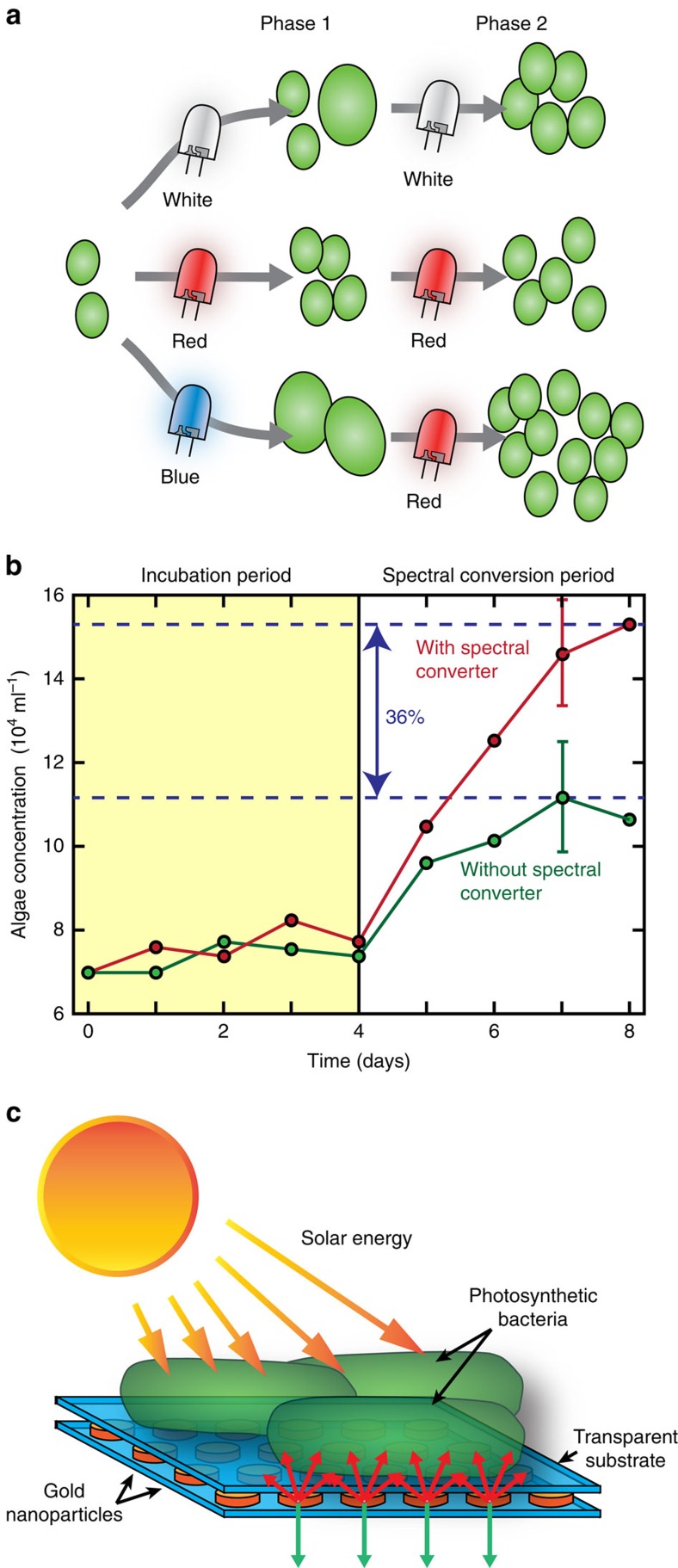Figure 4. Managing the light spectrum.
(a) Schematic showing how alternating blue and red light can induce increased growth in green algae by first increasing cell size under blue light and subsequently inducing higher division rate by exposure to red light. (b) Graph showing the impact on growth of green algae of using spectral shifting dyes to convert green light to red light in a back-reflecting flat plate photobioreactor. The shaded region represents the initial incubation period after which the spectral converting layer was introduced. A net increase in biomass production of 36% was observed when the converter was used. Error bars represent a counting error of 25,000 cells. (c) Schematic showing how plasmonic backscattering can be used to direct photosynthetically useful light (red arrows) towards microalgae cultures while allowing other wavelengths (green arrows) to be transmitted for other applications. This approach uses the wavelength specific nature of plasmonic resonances to selectively scatter light. The resonant wavelength can be tuned by controlling the geometry, distribution, and material of the plasmonic nanoparticles, substrate, and surrounding media. (a) Adapted from ref. 38 with permission from Elsevier (b) adapted from ref. 45, previously published under a CC-BY-NC-SA license, copyright Wondraczek et al., licensee Macmillan Publishers Ltd 2013 (c) reproduced from ref. 56 with permission from AIP Publishing.

